Real Research in Unexpected Places – Backyards, Barns, Bayous

Fisheries research project conducting a creel survey at Hackberry Rod and Gun Club in Southwest Louisiana. Our team has weighed and measured over 1800 fish studying food web dynamics in the Calcasieu Estuary.
21st-century science labors under the myth that good experimental science requires expensive lab facilities in a university or institutional setting. We have the example of Marie and Pierre Curie discovering radium in an abandoned shed, Lavoisier’s seminal Chemistry work in his home laboratory, and Isaac Newton’s seminal work in optics in his mother’s farmhouse (Woolsthorpe Manor) in Lincolnshire. But somehow, we often think modern science requires expensive laboratory facilities with all the amenities.
Except for my freshman year working at the crawfish farm at LSU, most of my formal training would lead me to the same conclusion, including laboratory jobs at LSU, Brookhaven National Laboratory, MIT, and Cisco Systems. I figured all the inexpensive and easy experiments had already been done, and that the requirement for published work to be novel and relevant drove a firm requirement for expensive equipment and research institutions. But after September 11, 2001, my wife and I realized our small farm business in Ohio was uniquely situated to address some relevant and timely questions in small arms ballistics, so we formed a small company and got to work.
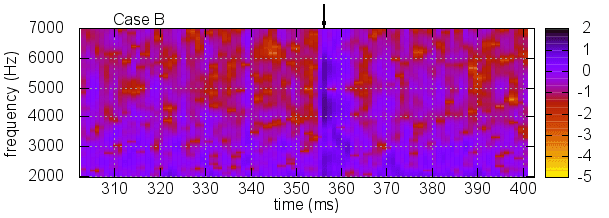
Sound spectrogram of a handgun bullet hitting a living target. Backyard experiment published in Medicine, Science, and the Law.
We constructed a ballistics range in our backyard, fitting it in between our newly planted vineyard behind the house and a newly planted orchard. We developed acoustic methods for measuring bullet velocity and drag, a method for studying bullet deflection from intermediate objects, new methods in wound ballistics, and acoustic methods for detecting target location from sound recordings.
When I was hired as physics faculty of a southern university in 2006, I was finally provided with a laboratory for my ballistics work in a “proper” institutional setting. However, red tape relating to the equipment needed for ballistics necessitated that our experiments during that period be performed either in the basement or the back yard of our rural rental home. This was an important time, as the university provided equipment for our first measurements of ballistic pressure waves and we also published important educational papers demonstrating acoustic techniques and lamenting southern compromises in academic rigor. Since I was unwilling to compromise academic rigor, I left the university laboratory and $50,000 in start-up funds on the table, and my wife accepted a faculty position in the West Point Department of Physics and Nuclear Engineering.
Our year in New York was a mix of frustration and excitement from a research perspective. My wife had daily contact with Army officers who recently returned from Afghanistan and Iraq where improvised explosive devices were a rapidly growing threat, and blast-induced traumatic brain injury was becoming known as the “signature injury” of the post 9/11 conflicts. Researching the issue, we quickly became aware that our backyard ballistics work linking a thoracic pressure wave to remote brain injury could shed light on mechanisms of blast-related TBI. We collaborated on a combination theory and review paper on A Thoracic Mechanism of Mild Traumatic Brain Injury Due to Blast Pressure Waves.
Our introduction to fisheries research began on Lake Stilwell, a well-maintained freshwater fishery at West Point that our family could fish because of my wife’s faculty status. After a successful first outing there, my children and I began weighing and measuring the fish we caught, because I wanted a nice hands-on science project to help teach my elementary age children (2nd to 6th grades) about power laws and to emphasize for them the importance of math and quantitative measurements in science. By the time she was in high school, our oldest daughter realized it was possible to improve the power-law commonly used to describe weight-length relationships in fish. The data from Lake Stilwell served as the first trial data sets for early testing of replacing the power-law coefficient with a scaling parameter. By her 12th grade year, we had access to much more data and the idea could be tested much more broadly resulting in a trip to the International Science and Engineering Fair and a peer-reviewed paper.
The frustration of New York related to the legal and bureaucratic challenges in pursuing experimental work in blast and ballistics. We published a few important papers that year, but our new original research was confined to theory. The bureaucracy proved daunting, so we relocated to a rural property in the middle of a Mid-Western cornfield with a barn, a basement, lots of nearby lakes, and plenty of space for experiments in the blast, ballistics, rocketry, and our emerging interest in fisheries science.
Proximity to so much excellent deer hunting empowered an experiment to more directly test the idea that high strain rate insults to the thorax could cause remote brain injuries. The main idea and method were simple, and the barn was just the right place for dissecting local deer shot in the chest with high-power rifles to allow closer inspection for hemmorrhaging in the brain. The barn was also a great facility for testing new and existing rocket motor designs on a custom force plate, because it had sufficient ventilation for exhaust gases while also providing power and protection from the elements for the computer and sensitive electronic equipment needed for the testing. While we had access to academic facilities for both these projects, the possibility of a catastrophic over-pressure (CATO) in the rocketry (we had a few), and the mess and redneck associations of the deer project suggested the use of the barn was the more prudent approach.
In that Mid-Western facility, the basement was something of my refuge and a quiet place where I could think. We had constructed a potato cannon some years before and done the acoustic testing for velocity measurements while standing on the basement steps of another home aiming at a big aluminum plate target. The year at West Point had convinced me we needed a laboratory shock tube to simulate blast waves, but as we diligently scoured the internet for design ideas, we found the designs and performance specifications frustratingly vague. I remember first loading the spud gun with a crumpled piece of paper and then gluing paper over the opening from the chamber to the barrel to produce our first prototype shock tube. It seemed to work, but we had no way to measure the pressure or quantify performance. This seed would take several years to bear fruit, but would eventually yield a string of laboratory shock tubes and other blast simulating devices.
Our children and I still loved to fish, and after trying out a few local lakes, we found one where we could catch channel catfish (yum) reliably. We continued the habit of weighing and measuring our catch, so we eventually had enough data to fit into a power law. Literature research showed that the more interesting use of our data was assessing the health of the ecosystem by comparing the weight we measured for each specimen with the expected weight for fish a given species and length. Other scientists had established standard weight curves for each species that described how much healthy fish of a given length should weigh. Skinny fish suggested insufficient food supplies or other environmental stressors. Fat fish suggested a good ecosystem and plenty of food to go around.
Some backyard ballistics experiments during that Mid-Western period were failures: we failed to develop an alternative biofuel-based gunpowder based on sugar and potassium nitrate. However, we also had our first (and possibly only) successful kitchen experiment: an acoustic demonstration of Galileo’s law of falling bodies, by using a microphone and the Audacity computer program as a timer with sub-millisecond accuracy.
I truly loved our Mid-Western facility and had hoped to stay there a long time. However, we found the academic establishments once again working against our consciences and deep convictions that awarding unearned academic credit is fraudulent. When I was offered a job at the Air Force Academy, it seemed like an opportunity to exercise both my commitment to academic rigor and my desire to serve my country without compromise in academic values or research opportunities… to be continued…
I grew up working in bars and restaurants in New Orleans and viewed education as a path to escape menial and dangerous work environments, majoring in Physics at LSU. After being a finalist for the Rhodes Scholarship I was offered graduate research fellowships from both Princeton and MIT, completing a PhD in Physics from MIT in 1995. I have published papers in theoretical astrophysics, experimental atomic physics, chaos theory, quantum theory, acoustics, ballistics, traumatic brain injury, epistemology, and education.
My philosophy of education emphasizes the tremendous potential for accomplishment in each individual and that achieving that potential requires efforts in a broad range of disciplines including music, art, poetry, history, literature, science, math, and athletics. As a younger man, I enjoyed playing basketball and Ultimate. Now I play tennis and mountain bike 2000 miles a year.

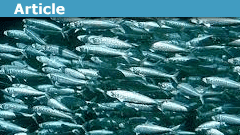

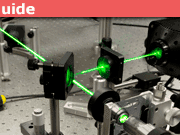


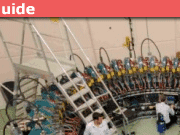
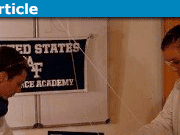
Fascinating.
Interesting perspective! Looking forward to the next part!